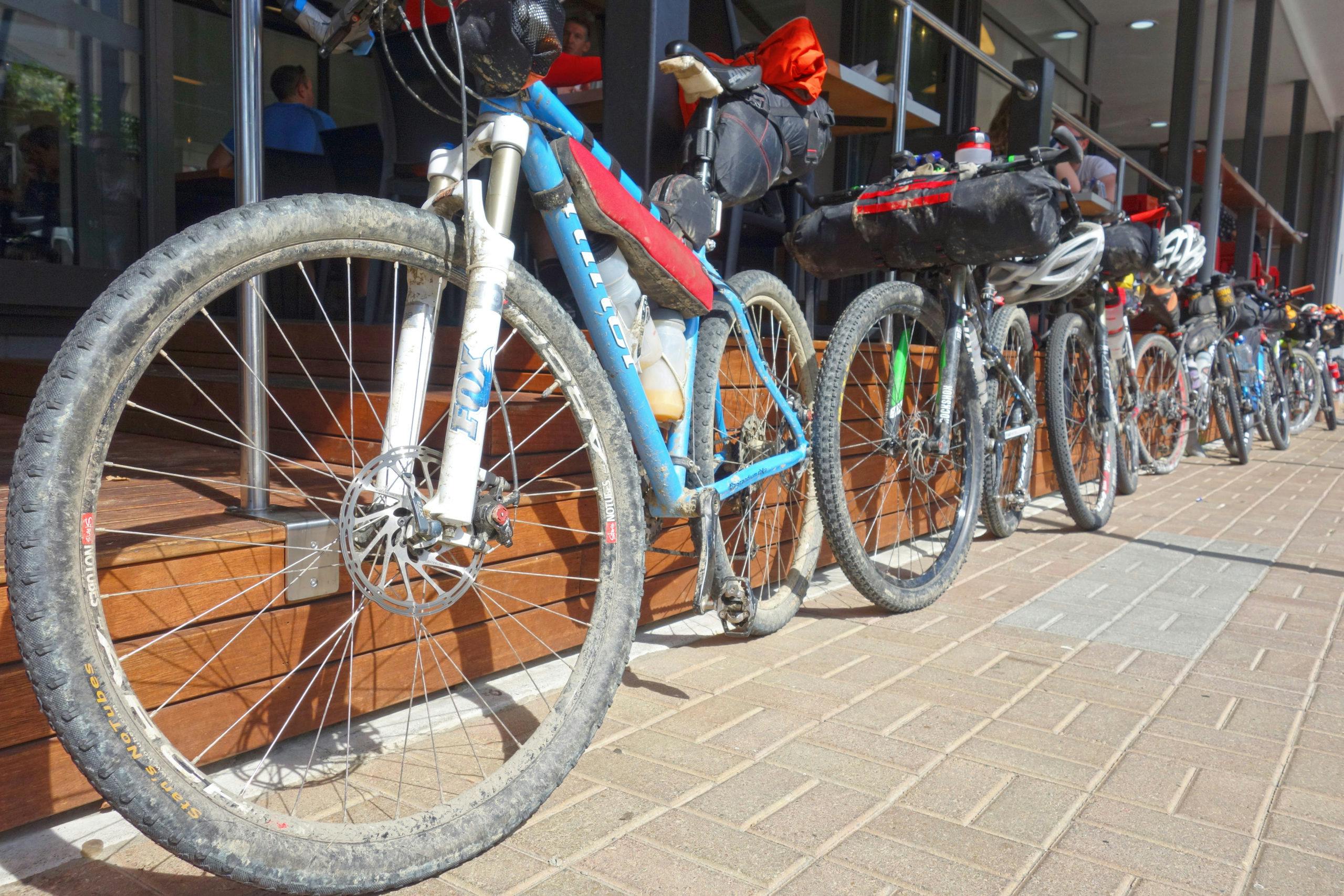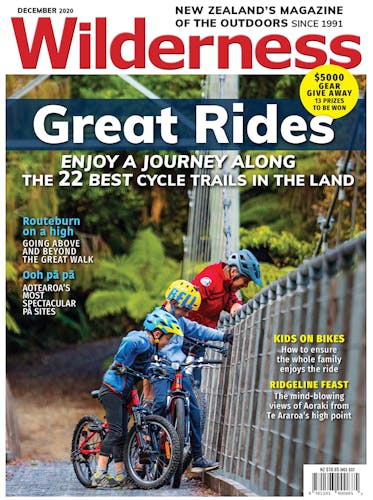If you want to be more self-reliant on your cycle trail adventures, you’ll need your own bike and accessories to carry your gear. By Jonathan Kennett
Bikepacking is a great way to explore the country, but the longer you spend in the saddle, the more important your bike choice becomes.
Your bike, especially the handlebar grips and saddle, need to be chosen and set up to suit one person only: you. This isn’t to say you need to buy an expensive bike for the Great Rides. A common hardtail mountain bike can usually be modified to suit.
Frame size
The first and most important decision to make when choosing a bike is frame size. When standing astride the bike, there should be 5-10cm of clearance between the top tube and your crotch. You’ll then need to adjust your seat height and handlebar stem to fit properly.
A professional bike fit, aiming for comfort rather than speed, can be worth the cost (around $100). Ask around to find out which local shops understand the demands of your planned cycle trails.
Frame material
There are three common frame materials: carbon fibre, steel and aluminium.
Carbon fibre is light and strong and provides a bit of flex to dampen vibrations from the trail. It is often chosen by riders who are happy to spend extra dollars to save a little weight.
A good steel frame could well outlive its owner and is commonly used by manufacturers who make bikes specifically for ‘bikepacking’ like Salsa and Surly, which have lots of carrier bolts, something mountain bikes are lacking. There is a slight weight penalty (around 600g).
Aluminium alloy is the most common and inexpensive frame material and is used on both cheap and expensive bikes, so you really have to do your research and choose carefully. Aluminium frames are generally stiffer than steel or carbon which translates into a slightly bumpier ride.
To bounce or not to bounce?
Front suspension adds about a kilogram of weight to a bike yet most bikepackers accept that weight penalty because suspension provides more comfort and better handling over rough terrain. That means you are less likely to crash and you’ll finish the day feeling less tired.
Wheel Size
Larger diameter wheels roll faster and more smoothly, which is why most riders choose 29-inch wheels. It’s also easy to find replacement tyres.
If you already own a bike with 27.5-inch wheels, then stick with them as the difference is negligible. Save your money for pies.
Tyres
Tyre choice is a balancing act between comfort, safety and speed. A narrow tyre will be fast on sealed roads but provide poor traction on gravel trails. Narrow tyres are also hard on you and your bike.
The ideal balance is a two-inch tyre with non-aggressive tread. An excellent choice is something like a Maxxis Ikon (by far the most popular bikepacking tyre in New Zealand).
Handlebars
Flat mountain bike bars provide great bike handling on rough trails. But they only provide one hand position, which can become tiring. That’s why bar-ends are a good addition, especially for climbing as they help you open up your lungs. Drop bars are more aerodynamic and provide several different hand positions, which is a bonus. But they don’t provide very safe handling on downhills.
Saddle
Seat selection is critical and most seats fitted to bikes on the shop floor are uncomfortable after about 10 minutes of riding.
Everyone’s ischial tuberosities (sit bones) are different widths and good saddles come in different widths as well. Don’t be afraid to take the time to try different models.
The most raved about seats are Brooks leather saddles – the type that has been around for over a century. You have to do a few hundred kilometres on a leather saddle to mould it to your butt and then they are very comfortable.
Synthetic saddles are more affordable and there are many comfortable models that don’t need to be broken in.
Bags
Modern bikepacking bags, as opposed to traditional pannier bags, don’t need a carrier and they provide a light and aerodynamic setup. They don’t allow you to carry too much gear, which is good because New Zealand is a hilly country and travelling light makes riding much easier.
The three main types of bags are a seat bag, a frame bag, and a handlebar roll bag. If you need more capacity, there are small bags that strap to either end of your top tube (good for tools, spare tube, or snacks) or the back of the handlebars.
Traditional cycle touring panniers are easy to pack, but have a couple of drawbacks. First, you need to have carriers to attach them to and very few mountain bikes have braze-ons for carriers these days. Secondly, panniers have more carrying capacity, which encourages you to carry too much stuff.
A good compromise is to have a Thule (aka Freeload) carrier with a dry bag of gear strapped to it. They attach to the seat-stays of most mountain bikes and if done up tightly they are just as sturdy as bikepacking bags.
Try to load everything onto your bike rather than your back but if that proves difficult, consider taking a lightweight backpack that you only use for carrying snacks and essential clothing.
In a nutshell
Comfort plays a big part in enjoying long days on the trail. I recommend a bike set up for comfort, fatter tyres and/or suspension, and a saddle that’s made for sitting on all day.
The most common type of bike used for bikepacking in New Zealand is a 29er hardtail mountain bike, with front suspension. It’s an incredibly versatile and comfortable bike.
And riding a bike that is reasonably common means that finding spare parts is easy, even in remote bike shops where you are most likely to need them.
– Jonathan Kennett is the author of Bikepacking Aotearoa







